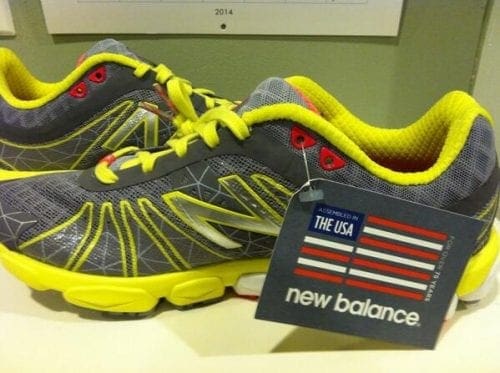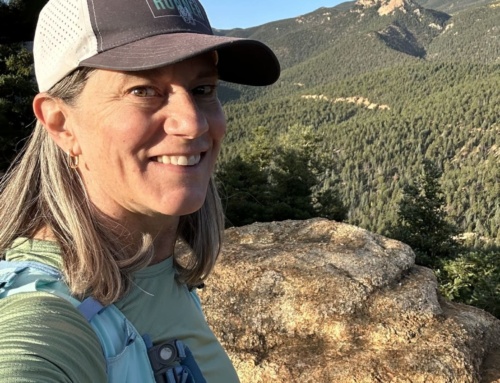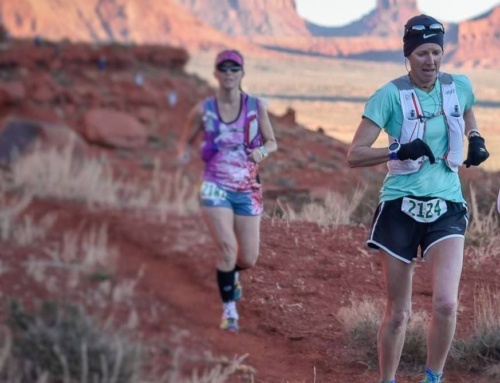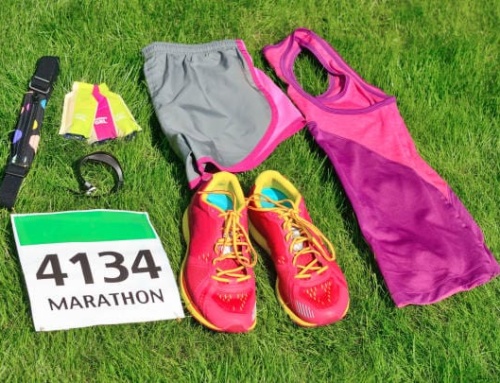
My favorite for a few years—loved the colors!—until my feet fell out of love for some unkownable reason.
When I started training for my first marathon way back in the Dark Ages of the late 1980s, I was a dating a moderately successful writer who preferred a chemical high to an endorphin-induced high. Even HE knew that I needed a “real” pair of running shoes and how to score them.
Writer-man took me to a local running-shoe store full of scary skinny serious runner dudes (and they were all dudes back then), who looked at my feet (the horror) and my old sneakers (the horror), asked me all kinds of questions about my mileage and surface preferences (huh?), brought out a few pairs of sneakers for me to try on, and watched me run.
I hate to hang a story on a writer-man, especially one who prefers chemicals to endorphins, but what can I tell you? I was young and impressed with moderate fame. He bought me good running shoes. (Then I ditched him … for a runner! Oof. Sorry, writer-man.)
Of course, back in the Dark Ages, there was no Internet for the masses, no free shipping/free returns, no big box stores full of deeply discounted bargain bins, no online reviews to parse and compare, no half-off last-year’s models (of dubious origin) on the world’s largest marketing website.
And yet still TODAY—not in the Dark Ages—if you were to ask the Runner-in-Chief of Runner’s World where to get running shoes, this is what he would tell you: “Your local running store is the best place to start.”
I know because I asked him!

Nina got fitted for her first pair of “real” running shoes at our local shop on her ninth birthday (2013)! Note the vintage Stop Pre poster in the background.
Jeff Dengate: “The number 1 shoe-buying tip I always give is: Go to your local running store to get properly fit. For total beginners, a shop full of skinny, fast runners can be incredibly intimidating. That can make it tempting to snag a pair from a big box store or a discount bin, but if you end up with an uncomfortable shoe, you won’t enjoy running. The staff there can measure your foot and let you try on plenty of options so you’re more likely to find a pair that works for you and feels comfortable.”
But running shoes are exxxxxpennnsivvve, you say. And buying them is no fun.
Who wants to spend more than $100 on a pair of ***sneakers*** you can wear for only a limited percentage of your waking hours?
You do. And so do I. Because the problem is, if we run in a pair of shoes that are worn down in the heels, or are a little too narrow in the toe box, or come up too high around the ankles, or cause the ball of our feet to burn, or have been in the back of our closet for how many years, we are at best going to be uncomfortable and unhappy.
At worst, we risk the dread “I” word—injury! [screaming face emoji]
Think of it this way: A new pair of running shoes is a lot less expensive than knee surgery.

I ran to the bookstore in new shoes to get this book for Nina, who was in 5th grade in 2015. You know what that means, right? I need to …
How to Buy Running Shoes
1. Make the time
The amazing Matt Walsh, a near-elite runner (profiled in Runner’s World!), used to manage the local Sneaker Factory. He was so thorough divining the absolute perfect shoe for MY foot. (And yes, I paid for running shoes from my local running shop even when I worked at RW.) It took For.Ev.Er.
Pro tip: Avoid weekends if at all possible, because if you’re lucky enough to get someone as good as Matt, you may have to wait for him to finish up with a previous customer.
2. Bring your patience
Don’t try to fit in a shoe fitting after you drop your daughter at swim practice before going to the grocery store to pick up ingredients for dinner. See above.
3. Go later in the day
Even better if you already ran. Your feet swell during the day. You want shoes that fit your biggest feet.
4. Bring your socks
Whatever you like to run in (we love cushy Balegas!)
5. Bring your previously worn shoes
A good running-shoe fitter will look at the make and model and the wear pattern for clues.

Your socks don’t HAVE to match your shoes, but I was quite Pleased With Self.
6. Throw out your perceived “size”
You may wear a size 7 street shoe but a size 8.5 running shoe. Try to remain calm. Your feet need that extra room for when you’re slapping your 2.5 times your body weight with every step you take. You may have seen your feet change sizes as you got pregnant, had babies, gained and lost weight.
7. Speaking of age
Around age 40, women start losing fat in their heels (among other indignities). This may mean you need more cushioning in your shoes than you did, say, back in the Dark Ages.
8. Buy for “feel” not style
Possibly the most important point: Your shoes need to feel good on YOUR feet. My perfect shoes aren’t yours; reviews in magazines or websites can give you an indicator (maybe) of what to try, but IRL, an exact same pair of running shoes is going to be dream for one person and a nightmare for the next. As tempting as it is, you can’t buy for cute colors, or a discounted price.
9. Only run in them
What? Now that you’ve spent more than $100 for a comfortable pair of well-fitting running shoes that nicely hug your arch, fit around your heel without slipping, and allow your toes to wiggle happily, you can’t wear them ALL THE TIME?
No. Sorry. These are your RUNNING shoes. If you wear them all day every day, they will cease to be good for running.

See these holes? Three years old! I know I need to throw them out!

Worn-out cuffs? BUY NEW SHOES.
10. DON’T WAIT
Newbies may feel like a mildewy old pair of sneakers rattling around in the basement would work just fine for 2 miles. (No.) Forgetful veteran marathoners may forget to track how many miles they’ve run and wake up one week before race day thinking, “Wait! I need new shoes!” (Oh right, that was me.)
*** (Random, braggy) FOOTNOTE: Running shoes or sneakers? Aren’t the words interchangeable? In my Runner’s World years (2003-2017), we weren’t allowed to use “sneakers.” I can’t remember why. As it happens, I am in the Merriam-Websters dictionary using the word “sneaker,” in the intransitive verb definition of the word “rule.” The sum total of my 15 minutes of fame. HA.
slang : to be extremely cool or popular —used as a generalized term of praise or approval
for a little attitude at the right price, sneakers rule
—Tish Hamilton
Thanks, Merriam-Webster!






Thank you, Tish! I’ve recently gotten my husband hooked on “real” running shoes, so I’m sharing this with him (read: cool look vs. feel). Now I’m wondering…how can we tell it’s time for a new pair? I know you can look up mileage, but I also sense that there may be a point before — or after — that mile number that means it’s time for new ones. Speaking as someone who has determined when to invest strictly based on when I had the money to do that… I’d love some pointers for looking out for that moment ahead of time and not waiting until it’s been long overdue!
Okay, you posted the picture of theHarry Potter book, so now I have to share the kid joke my daughter sent while I was at the AMR Retreat last weekend. Question: “What’s Harry Potter’s favorite way to the bottom of a hill?” Answer: “Walking” Your response is going to be huh? But then she added, “JK, Rolling”. Not bad for a kid joke!
Now I really want to know who quasi-famous writer man is …
Hi Katie, thank you for your excellent question! The general rule is 350 to 500 miles, or 6 to 12 months, whichever comes first. That’s obviously a big range! (And I’m terrible at keeping track.) Better to buy them BEFORE you need them and rotate them with your “old” pair. Several running friends can tell when their shoes feel “flat” and it’s often before the magic 350 to 500-mile mark.
I just discovered today that the Garmin app lets you enter your gear (ie: shoe brand) and it keeps track of the mileage for you. So thrilled, as I can never remember to do this on my own.
Great tips! Support your local running stores. P.S. We love Ragged Mountain Running Shop in Charlottesville, VA. :-)
love how Strava will track my miles and even let me know when I have hit an inputted number of my choosing. I do keep an old pair of running shoes around to walk in. they didn’t quite hit the mileage I had planned for them but it is nice to have a quality pair of shoes for those days where you do a lot of running and standing.